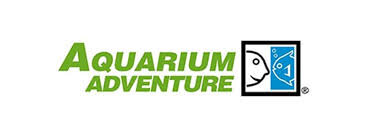Controlling Algae in the Pond
The number one question or challenge pond gardeners run into is algae. All types of algae grow in response to added nutrients and increasing length of daylight. Ponds go through excessive algae proliferation phases throughout the pond season. In the spring, algae blooms will be the primary form of algae. For the rest of the year, various types of algae will compete for control in the pond. This is a normal and natural process of the pond water reaching a balanced condition. Despite this, most pond gardeners want to get rid of it, and there are ways to safely inhibit excess growth of algae. Generally, there are two types: green, soupy water (algae blooms) and long, stringy hair grass (macro algae growing on rocks and sides of the pond).
Green Water
As previously stated, pea soup-like water is often normal in the early stages of a pond's season. There are a few ways of managing this unsightly phenomenon.
Natural Method: Using a natural process to control algae is a relatively easy, inexpensive and long-lasting solution. The main drawback is the time needed for this method to make an impact on the green water. Essentially, the process calls for the addition of plants to out-compete the algae for light and nutrients.
Oxygenating plants such as hornwort, foxtail and parrot's feather grow very rapidly to use up nutrients. When they spread out, they also absorb much of the light coming into the pond. Oxygenators are so called because they photosynthesize very rapidly and release a large amount of oxygen into the pond, adding to the overall health, and preventing stagnation.
Floating plants such as water lettuce and water hyacinth will also perform the same benefits as oxygenators in that they grow very rapidly and block a great deal of the light coming into the pond. For effective results with this approach, roughly 2/3 of the pond should be covered with plants. Bear in mind that since they grow and spread very rapidly, only a few need to be purchased to establish a base in the pond.
Chemical Method: Another way of controlling algae is with chemical pond shades and algaecides. The shades are dyes or tints that are added to the water, and minimize the light being transmitted into the pond. Chemical algaecides work for a short period, but eventually the algae will return unless the chemicals are dosed on a regular basis. Additionally, algaecides can be harmful to various aquatic lives, especially invertebrates, like snails.
Mechanical Method: An alternative method of controlling green water is to use a piece of equipment called an Ultra Violet Sterilizer (UV). This device uses an ultraviolet bulb to create rays that sterilize and kill algae cells that are free floating in the water column that causes "green water".
Keep in mind that while these units are extremely effective at controlling green water (results within a few days to a week); they will not have any effect on stringy macro algae.
Stringy Macro Algae
Methods involving competitive plants will also work well against the stringy type of algae. However, even using these methods, hair algae can still get a foothold. As with green water algae problems, chemical algaecides can be used, but they have their downsides. The chemical action and rapid killing of macro algae can rapidly deplete the oxygen levels in the pond and thus effect the fish, so care must be used. Physical removal will help, but this requires constant maintenance.
Our European counterparts have provided us with another way of algae control that is catching on in a big way in the U.S. Barley straw, when placed in a pond has the effect of inhibiting the growth of stringy hair algae. When it decomposes, peroxides and other chemicals are produced, and these attack the algae. Various products exist, from miniature bales of the straw to pellets and liquid extract of the straw. Whatever the source of barley straw that is used, they should be used early in the spring and late in the year, before closing the pond. This keeps a constant supply of the chemicals in the pond to keep working against algae all year long.
